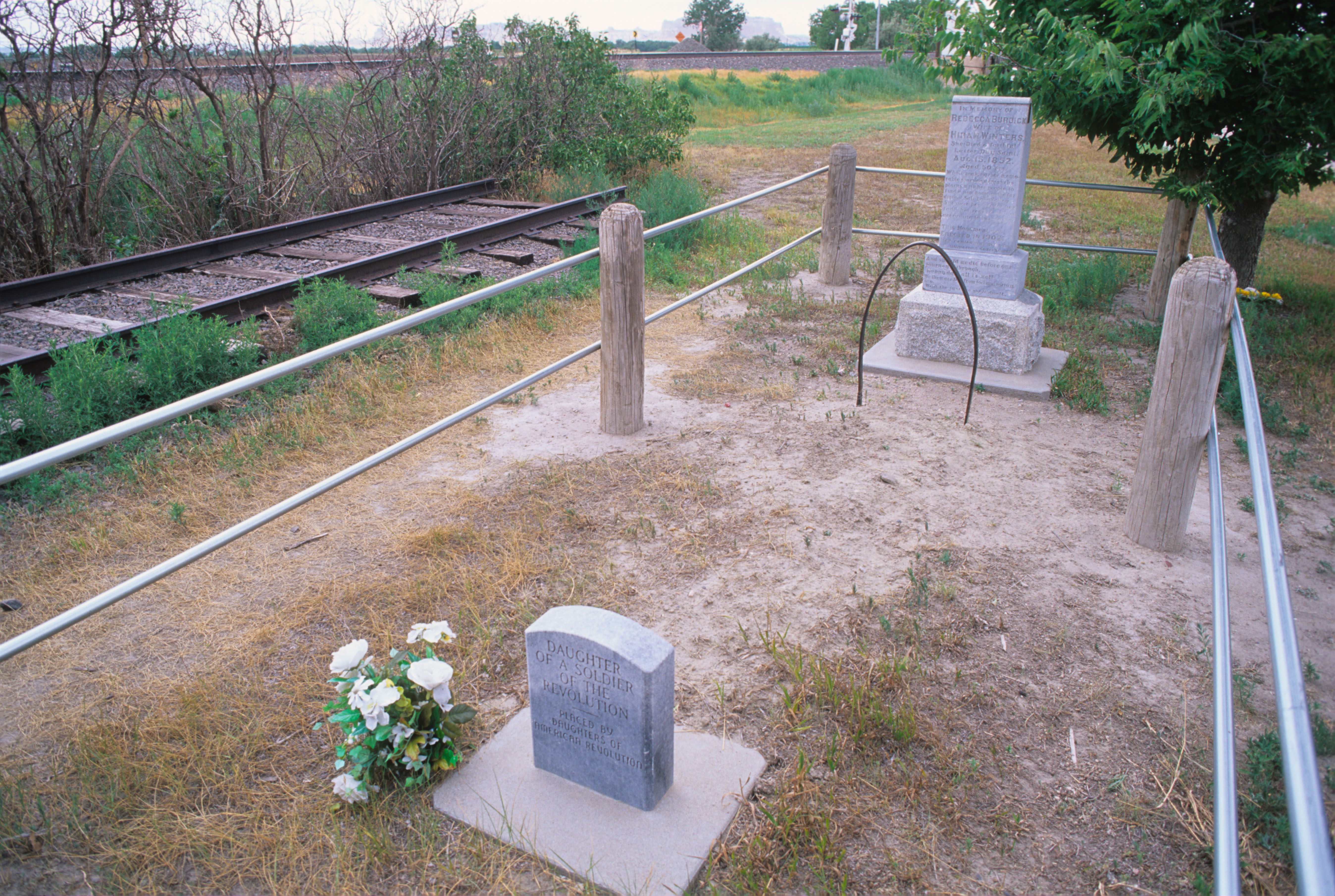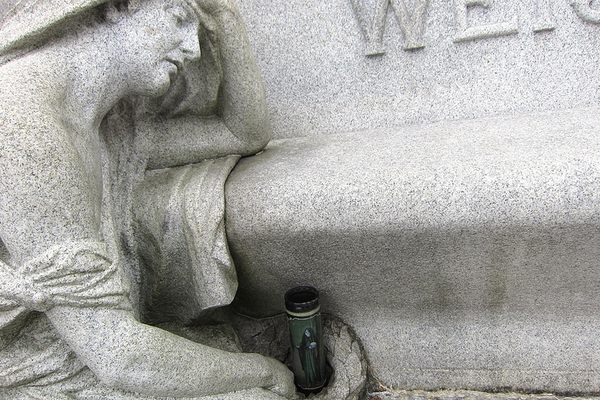A Mormon Pioneer’s Grave, Marked Only With a Wagon Wheel Rim
Rebecca Winters’s grave is one of the few that were marked at all.

Death is a lonely business, but often graveyards are crowded places. This week, we’re remembering some of the loneliest graves in the universe—places of particular isolation, melancholy, and beauty. Previously: the most isolated war grave of the British Commonwealth.
Rebecca Winters was born in 1802 and baptized into the Mormon church in 1833. The Church of Jesus Christ of Latter-day Saints had been founded only a few years before, and as an early convert, Winters and her family faced harassment and discrimination. By the 1850s, they were on the move west, as part of the Mormon migration to Utah, led by Brigham Young.
Traveling west was a dangerous endeavor, and in August 1852, cholera started to spread among the people Winters was traveling with. She caught the deadly disease and quickly passed away.
Many people died on the these trails, but few of their graves can be found. Often, people were buried directly beneath the road, where wagon wheels would run over their graves, hardening the ground and keeping their bodies protected from animals. But Winters’s grave was different.

Her family buried her beside the road, in a particularly deep grave. They laid planks from a broken-down wagon on the bottom, wrapped her body in sheets, and covered it with more planks—a makeshift coffin. A family friend, William Reynolds, bent a wagon wheel into the shape of a headstone and etched in her name: “Rebecca Winters - Age 50.”
Decades later, when the railroad was running through this part of Nebraska, surveyors discovered the grave marker. The tracks of the railroad ran right by the grave, which was soon marked with a stone monument. Later, a fence was built around it, too.

By the 1990s, almost a century after it was rediscovered, Winters’s grave had so many visitors that the railroad started to worry about their proximity to the train tracks. With the permission of her descendants, Winters’s grave was moved to a spot nearby, closer to the highway. It’s now in a small memorial park, hidden among fields and nearby industrial buildings.

















Follow us on Twitter to get the latest on the world's hidden wonders.
Like us on Facebook to get the latest on the world's hidden wonders.
Follow us on Twitter Like us on Facebook